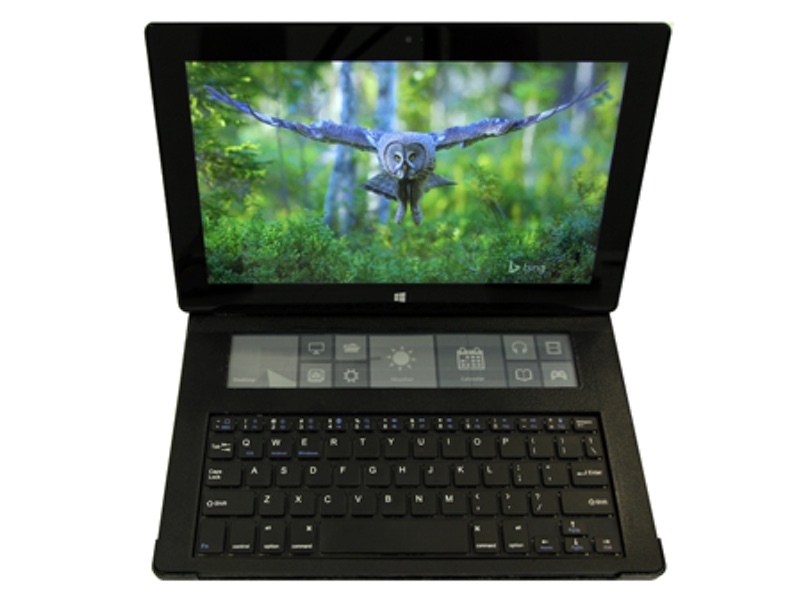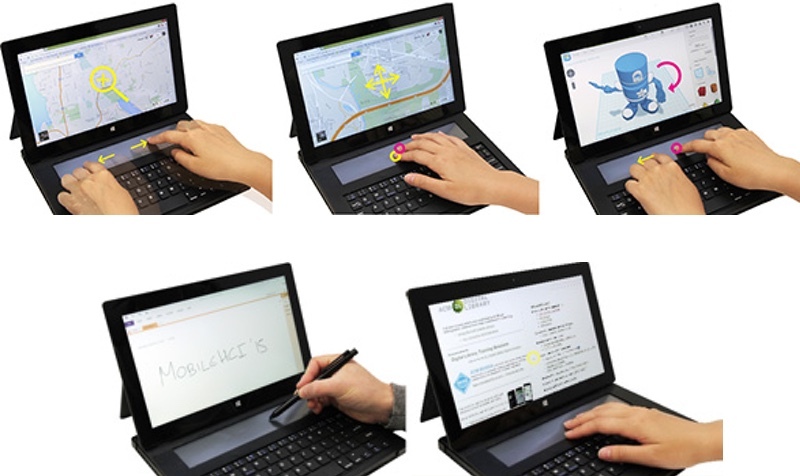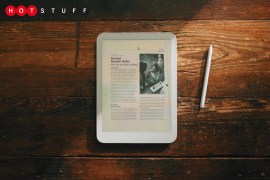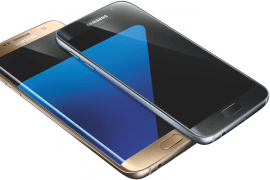Microsoft’s DisplayCover case uses e-ink to boost your tablet’s screen size
Ingenious inky interface inflates interactive images

E-ink: that magical, paper-like technology that delivers Potter-esque screen smarts, is soft on the eyes and even softer on battery life.
We’ve seen the printed goodness of e-ink grace e-readers, smartwatches and even a few smartphones – and now, the clever bods at Microsoft Applied Sciences have found a new use for it in the form of a touch-tastic tablet keyboard.
The research and development arm of Bill Gates’ baby has come up with a case, creatively dubbed DisplayCover, which packs both a standard physical keyboard and a 1280 x 305 pixel thinfilm e-ink display above it.
Printed panel
And that slice of e-ink ain’t no gimmick: Applied Sciences sees it as an extension of screen real estate, which can display information and shortcuts, as well as being interactive.
Panning, zooming, rotating – all possible on the DisplayCover’s e-ink bar, as well as stylus inputs. Oh, and Windows 8 icons look pretty cool on it,too.
Whilst we still haven’t quite got over being able to use an e-ink display as a touch-interface (despite the existence of that tech for a few years), it seems Microsoft have more than embraced it.
Applied Sciences’ blog says that the “bistable nature of electrophoretic ink” makes it an ideal choice, given the economical impact it has on battery life, and the case allows it to extend the usable screen interface of a tablet like the Surface 2 by around 8%.
What it doesn’t say, but we think it knows, is that it also looks pretty darn cool.
Go big or go home › Microsoft’s 84in Surface Hub has 4K screen
An inky future?

As the blog points out, for all the good of multi-touch tablets and hyper-powered, pro-performing slates, sometimes 10in just isn’t enough, particularly if you’re having to prod around on the screen, blocking key visuals.
Hence, DisplayCover. Will it catch on? Well, this isn’t Microsoft’s first foray into finger-key tech: in 2009, we were shown its Adaptive Keyboard, complete with screen and changing keys – and that is yet to hit the mainstream.
Still, we could definitely see a place for a low-power, page-like panel which takes toolbars and icons off the screen and puts them before your fingertips – just don’t hold your breath.
[Source: Microsoft Applied Sciences]



